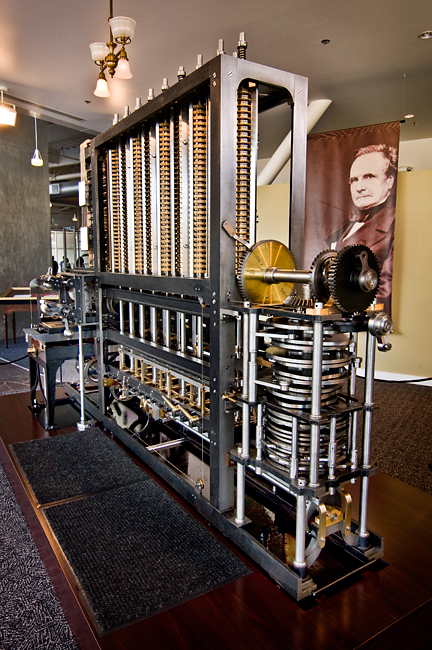F I R S T P R E V
P R E V 953
953 NEXT
NEXT LAST
LAST


Babbage's Difference Engine, Computer History Museum
Inside the Computer History Museum is one of the most incredible inventions ever conceived, Babbage's Difference Engine. The 1849 device adds, subtracts, multiplies and divides mechanically by turning a crank handle. Eleven feet in length, five tons in weight, and constructed from 8,000 parts, the mechanical device is accurate to 31 digits. Charles Babbage designed the device to eliminate human error from calculations but did not live to see the construction of this version which became, in essence, the world's first computer.
Babbage's Engine is just one of the many facsinating inventions you'll find in Mountain View's Computer History Museum. The collection also includes IBM's Deep Blue, the chess-playing computer that defeated Garry Kasparov as well as the first Macintosh computer. The museum's Visible Storage exhibit is one of the world's largest collections of computing artifacts and contains thousands of computing devices from tiny abacuses to room-sized Cray supercomputers, from Minuteman Missile guidance systems to console video games. The museum is located in the heart of Silicon Valley and free to the public.
MORE MUSEUM PHOTOS
EVEN MORE MUSEUM PHOTOS
[
MAP R-15 ]
4 Comments:
Your photos are fantastic. I am sooo not telling you which of these machines I have direct experience with.
Holy crap! What a treat! I gotta head down there -- I was a late bloomer when it comes to computers, but I love this sort of stuff...
Actually about 40 years ago when I was "majoring" in electronics at Monterey Peninsula College a man (I think he was from IBM) wheeled in a Huge piece of electronics equipment -- it was the memory for something, but I forget what. You could see how the criss-cross lattice network was formed -- like interlocked X's and how a signal could travel from one spot in the memory to another. It used the binary number system (still a mystery to me) and one of the other students got bonus points because he already knew how to convert numbers into their binary equivalent so they could be entered into the memory, or translated into "real" numbers when they came out...
I never went after a career in electronics... Never followed up my stint at Brooks Institute of Photography with a job in that field either... Here I am, 62, retired sort of, and I still trying to figure out what I'm going to do when I grow up...
Thanks again for all those photos, Ramsey... They're great!!! So fascinating and complex!!!
Gotta go research Steve Job's statement -- very curious... Maybe I'll go look for that book...
Dutchbaby:
I'm guessing the early Mac.
APAD:
Well with your photo skills and the fact that 60 is the new 40, I'd say the world's your oyster.
Oh, you know me so well. I programmed a PDP-8 when I was a computer science student.
http://en.wikipedia.org/wiki/File:PDP-8.jpg
You program it using toggles, just like the last photos in both of your additional photos pages.
It was actually a pretty good little machine. My microbiology professor won a Nobel prize in physics using a PDP-8.
The fact that there is one at the Smithsonian makes me feel like a dinosaur.
Post a Comment
<< Home